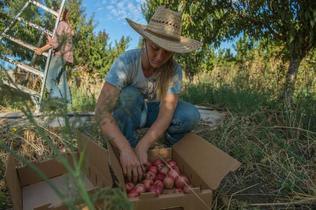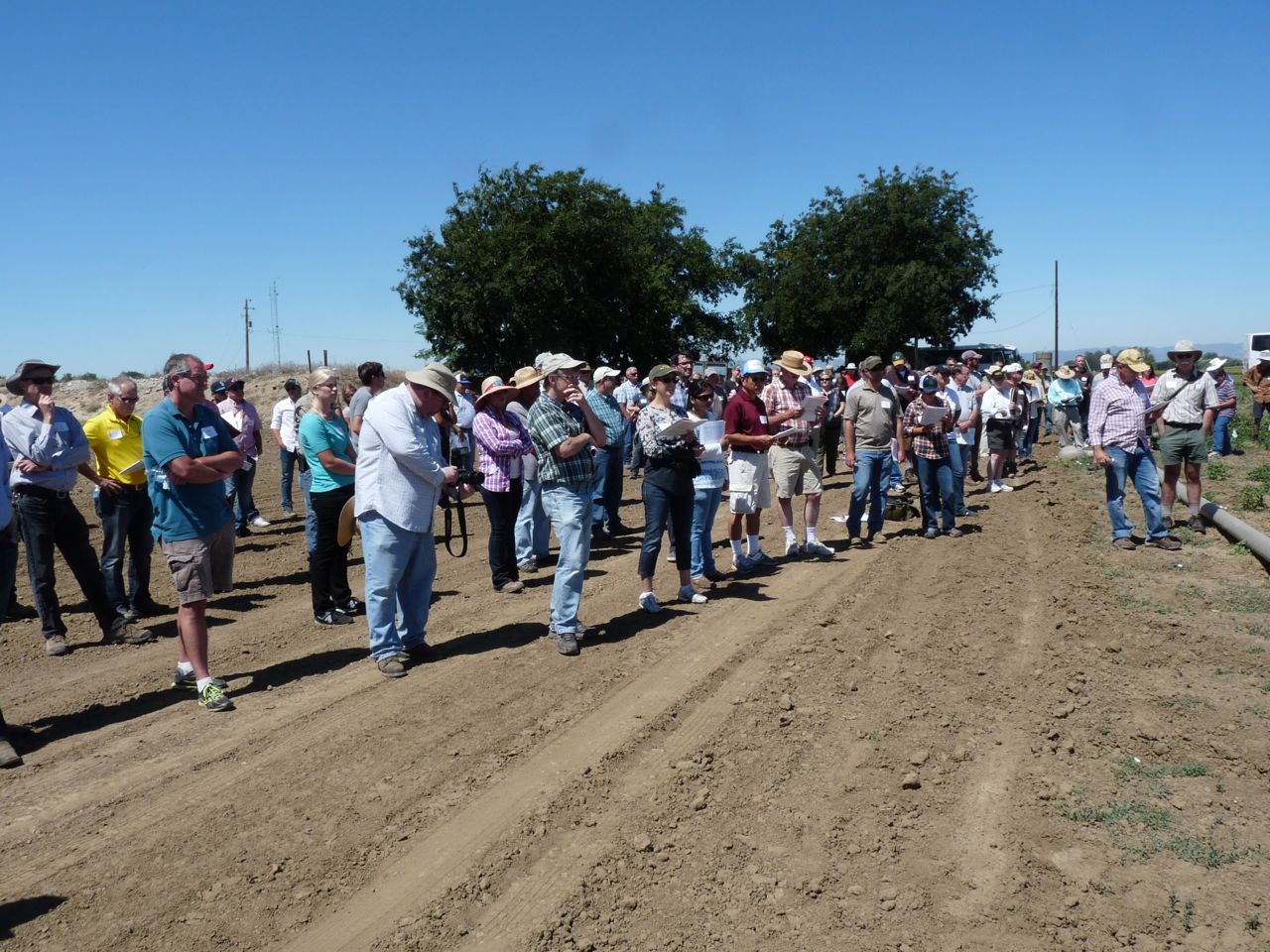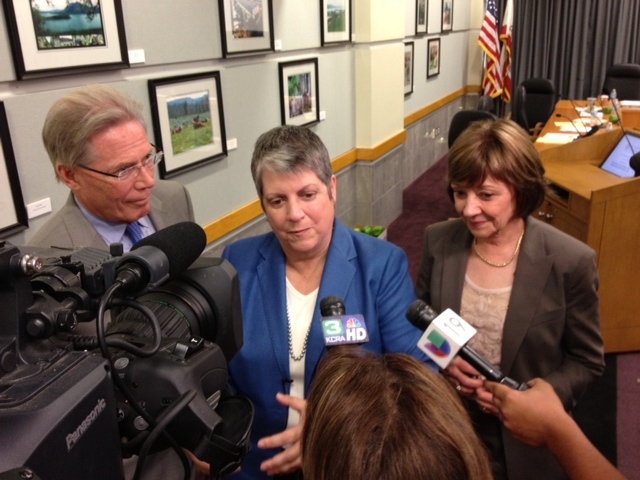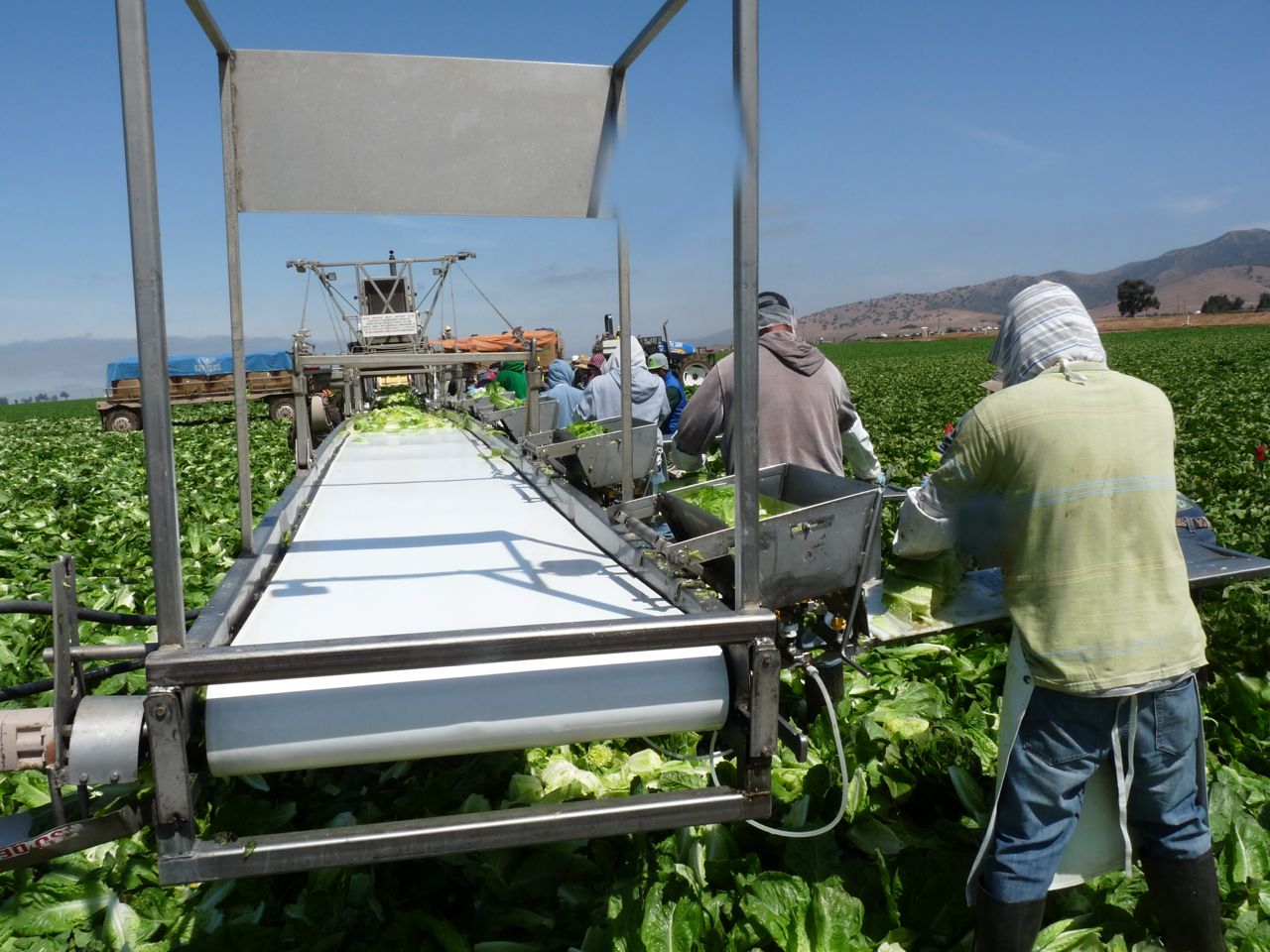Young Women Changing the Face of California Farming
On most mornings, Katie Fyhrie, 25 and Emma Torbert, 35 meet at dawn at their Davis fruit farm.
As they scramble up ladders to pluck fruit and later sort it into delivery bins, they embody a demographic shift underway in agriculture: young, beginning farmers, many of them women, are entering the field at an increasing rate.
So far, the influx hasn’t been enough to offset the demographics of existing farmers, who are mostly older men. The median age of American farmers is 59, according to the last U.S. Department of Agriculture census in 2012.
But times are changing. The 2012 USDA census found that the number of new farmers between the ages of 25 and 34 had grown 11 percent since the previous census was taken in 2007.
The number of women farming in California has steadily increased over the past three decades. The 1978 USDA census counted 6,202 women who listed farming as their main occupation. By 2012, there were 13,984.
These new farmers are embracing different delivery methods that don’t involve bulk commodity sales to food processing companies. They’re peddling produce directly to consumers through farmers’ markets, farm stands and subscriptions for produce boxes. Those sales methods increased 8 percent from 2007.
Fyhrie and Torbert sell their peaches and other organic fruit directly to subscribers in Davis and also to stores such as the the Bi-Rite market in San Francisco’s Mission district.
Neither woman comes from a farm family, and neither inherited land. Both are college educated and found their way to farming from other pursuits. Torbert holds a Bachelor’s degree in physics from Princeton University, and Fyhrie recently graduated from the University of California, Berkeley, with a degree in biology.
Both are crazy about farming.
Upon graduation from UC Berkeley in 2012, Fyhrie returned home to Davis. “I didn’t want to jump into working in a lab,” she said.
Instead, Fyhrie took a job as a summer field worker at the Impossible Acres Farm in Davis. “I’ve always enjoyed jobs that kept me outside most of the time,” she said.
Fyhrie deepened her commitment to agriculture in February, when she enrolled in the California Farm Academy, a program run by the Center for Land Based Learning in Winters.
Twenty hopeful farmers are currently enrolled in the seven-month program, 14 of them women, said Jennifer Taylor director of the academy.
“Women getting into agriculture is a huge trend,” said Taylor, who herself began farming several years ago in a Wisconsin dairy operation. “In years past it was a very male-dominated profession.”
Taylor said the gender shift may be a result of societal changes.
“The idea that one can actually be a farmer without coming from a farming family is starting to feel like a reality to more people,” Taylor said.
One aspect that is appealing to women is how farming adds a sense of service to a community. “Some want to feed people, others want to see food justice happen. One way to do that is to be involved in growing food .”
At Princeton, Torbert studied fusion energy. However, it dawned on her that physics is not the kind of work where the tangible effects of one’s work is readily evident.
“I feel there are so many problems in the world that need to be changed sooner,” she said. “In my other jobs it felt like I was just monitoring. As a farmer, I feel like what I do can have an effect on the system.”
Torbert changed gears and pursued a graduate degree in horticulture at UC Davis. Fyhrie is following in her footsteps once she graduates from the farm academy program.
Torbert started her Cloverleaf farm four years ago when she leased 5 acres from Rich Collins, owner of the 200-acre Collins Farm.
Cloverleaf farm recently earned its organic certification, and is just now starting to show a profit, she said.
“Sometimes I feel less supported and find that there is more skepticism from older-generation farmers,” Torbert said. “People make assumptions that you do not know how to drive a tractor.”
Not all beginning farmers are under 35, said Michelle Stephens farmbudsman with Yolo and Solano counties. A lot of the women who she helps with farm permits are new farmers in the 40-year-old range.
“It’s less their full time business and more of an augmentation to what they are already doing,” said Stephens. “So, maybe they have some chickens and they decide they want to sell eggs.”
Some women entering the field hail from longtime farming families, like Kristy Levings, who co-owns Chowdown Farms, a livestock operation in the Capay Valley.
Levings, who is 35, defines herself as a third-generation farmer. At age 11, she was already in charge of a commercial sheep flock. But she has not handed the reins of her farm. She had to leave him and come back to the farming world by way of the big city.
“It was not a given that I would engage in farming,” said Levings, whose only sibling is a younger sister. Bias against females taking over a farm was a factor.
“If you grow up in a farming family, there are different expectations on you based on gender,” Levings said. “If you don’t grow up in a farming family, it is easier to think about farming without a gender filter.”
She left the farm after high school to pursue a degree in psychology and gerontology at San Francisco State University. After graduating she entered a career in social services.
When her mother grew sick in 2007, Levings moved back to the Capay Valley. A year later, an attractive parcel of property came on the market. Levings, then 28, bought it with her farming partner Brian Douglass. They sell lamb and other meat to such well-known local chefs as Randall Selland and Patrick Mulvaney.
Levings said she believes women farmers are bringing new talents to the field.
“Women bring to the table a certain way of thinking about things – from a multitasking perspective,” Levings said. “Like planning strategically.”
She likened farming to conducting a symphony. “There are a lot of moving parts all at once,” she said. “You have to be able to hear when the farm is out of tune.”
She said that with livestock it helps to be able to look at the field and see how the flock is interacting within it and how it interacting with what is growing on it
The only limitation Levings sees to being a woman farmer? Physical power. “I don’t have the same musculature as a male,” Levings said.
For her, that’s nothing more than a momentary drawback. “There’s nothing I cannot do – I’ll just do it in a different way,” Levings said. “If I have to lift something heavy, I’ll figure out how to use a machine instead of trying to muscle it myself.”















